History
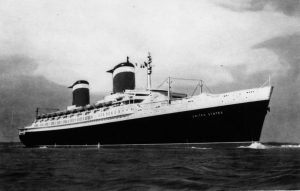 Over the centuries, ships have been named for famous leaders, for some ideal, or even for cities and states. They have been remembered for their wartime prowess, their luxurious furnishings, or for the tragic sinking. It seems like most vehicles, like ships, planes, and trains are often best remembered if they are involved in a tragic loss. Our minds tend to vividly remember traumatic events.
Over the centuries, ships have been named for famous leaders, for some ideal, or even for cities and states. They have been remembered for their wartime prowess, their luxurious furnishings, or for the tragic sinking. It seems like most vehicles, like ships, planes, and trains are often best remembered if they are involved in a tragic loss. Our minds tend to vividly remember traumatic events.
Still, some vehicles have been remembered for other reasons. The Spruce Goose for example, was a plane of enormous size that was made out of wood. The Hughes Flying Boat was at one time the largest aircraft ever built. Designer Howard Hughes piloted it on its first and only flight. It flew around the world in 3 days, 19 hours and 14 minutes. The plane still exists today and is housed in the Evergreen Aviation Museum in McMinnville, Oregon.
RMS Queen Elizabeth II was built in 1969. From the late 1960s until 2004, the Queen Elizabeth II was the only way to cross in luxury. She sailed many areas of the globe…not just the Atlantic. She even came to port in Sidney, Australia, among other places. The QE2 did not sink either, but rather, retired in 2008, and will soon become a floating hotel in Dubai.
All of these are interesting, but there is a ship that, to me, is far more unique than these…SS United States. I’m sure you are wondering what makes this ship so special. It’s not luxury. It didn’t sink. The thing that made this ship so special is that her top speed is a state secret. How fast must a ship be able to sail, before it is considered amazing enough that it must not be told? The average person couldn’t possibly know. I suppose someone knows, but it’s a secret. The SS United States is the last of the old greyhounds, and it is still around  today, slowly rusting at a Philadelphia pier…sadly. She was built with both passenger service and military use in mind. Many liners scrapped in the mid-1930s were sorely missed a few years later when WWII began…hence the secrecy about her true speed.
today, slowly rusting at a Philadelphia pier…sadly. She was built with both passenger service and military use in mind. Many liners scrapped in the mid-1930s were sorely missed a few years later when WWII began…hence the secrecy about her true speed.
In comparison with airplanes, I suppose that the speed of a ship would not seem so important. Many people in the 1960s stopped using ships, until the cruise craze came along. The SS United States still holds the westbound Blue Ribbon and has now been purchased by the Norwegian Cruise Line. Time will tell how the ship, purchased in 2004 will be used. As of 2018, she hasn’t sailed, but I hope that someday she will.
 When Hitler took power in Germany, the first goal was to take away the guns from the people. He then dismantled the police, and set up his own police force…loyal only to him. This was the beginning of Hitler’s planned takeover…first of Germany, and then the world. That was his goal, but thankfully, the world fought back, and evil did not prevail.
When Hitler took power in Germany, the first goal was to take away the guns from the people. He then dismantled the police, and set up his own police force…loyal only to him. This was the beginning of Hitler’s planned takeover…first of Germany, and then the world. That was his goal, but thankfully, the world fought back, and evil did not prevail.
World War II had gone on for almost five years…long years. Hitler’s forces were reeling from the devastating effects of D-Day, and Paris was next in line for liberation, The Allied machine was marching in to Paris to remove the Nazi Regime. Hitler was furious, and decided that if his army was to be forced out, they would take the best of the memories and landmarks of Paris with them. He planned to leave the city in smoldering ruins. Hitler issued the first of several orders to the German commander of Paris, General Dietrich von Choltitz, to destroy the city. What Hitler had not anticipated, was that von Choltitz would not blindly do his bidding. The last last commander of Nazi-occupied Paris in 1944, von Choltitz disobeyed Adolf Hitler’s orders to destroy the city, and instead surrendered it to Free French forces when they entered the city on August 25th. Choltitz later asserted that his defiance of Hitler’s direct order stemmed from its obvious military futility, his affection for the French capital’s history and culture, and his belief that Hitler had by then become insane, while other sources point to the fact that he had little control of the city thanks to the operations of the resistance, and could not have carried out such orders. Nevertheless, von Choltitz has since been referred to as “The Saviour of Paris.”
As I look at the current circumstances in the United States, I am reminded of the days of Hitler’s reign of terror. The riots in the streets, the calls for gun control and defunding the police, and the removal of the statues marking our past…good and bad, are all reminiscent of the days of early World War II. Just as in the days of 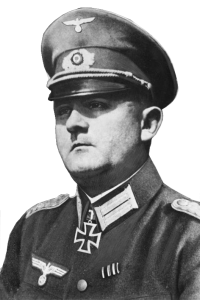 Hitler’s National Socialist Party, Socialism would not be good for America either. While the Democratic Party voters should understand that their values are like Hitler’s and yet, often blame the Republican party for being like Hitler, they are wrong. If they would look at history, instead of trying to remove our memory of the past, they would see just how alike Socialism is to Nazism and Hitler’s ways. Truly, the people of the United States need to wake up…and quickly. The decision to try to change our country to Socialism, is a slippery slope to communism, and the removal of the freedoms we hold so dear. We need to approach our future with our eyes wide open about the past of other nations, as well as the greatness that the American system of Capitalism has provided our nation with in the past. We like our freedom to let our voice be heard…a right that is found only in Capitalism. Don’t let the rights and privileges we so enjoy, be stolen from us by a handful of radical Socialists and Communists. The time to stand against Socialism and Communism is now!! Wake up America!!
Hitler’s National Socialist Party, Socialism would not be good for America either. While the Democratic Party voters should understand that their values are like Hitler’s and yet, often blame the Republican party for being like Hitler, they are wrong. If they would look at history, instead of trying to remove our memory of the past, they would see just how alike Socialism is to Nazism and Hitler’s ways. Truly, the people of the United States need to wake up…and quickly. The decision to try to change our country to Socialism, is a slippery slope to communism, and the removal of the freedoms we hold so dear. We need to approach our future with our eyes wide open about the past of other nations, as well as the greatness that the American system of Capitalism has provided our nation with in the past. We like our freedom to let our voice be heard…a right that is found only in Capitalism. Don’t let the rights and privileges we so enjoy, be stolen from us by a handful of radical Socialists and Communists. The time to stand against Socialism and Communism is now!! Wake up America!!
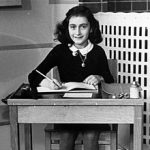
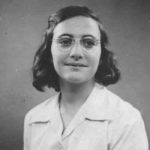 I recently listened to a book entitled, Treasures From The Attic, by Mirjam Pressler (in conjunction with Gerti Elias, wife of Buddy Elias, cousin of Anne Frank). I was not sure upon beginning the book, if it would hold any value concerning my interest in World War II and the Holocaust, but my concerns were quickly laid to rest as I listened to the story unfold. I’m not going to go into the story line really, except to say that the “treasures” that lay in the attic were partly about Anne Frank, but really more about the Frank family, and their torturous journey to learn the truth, and then to recover from it.
I recently listened to a book entitled, Treasures From The Attic, by Mirjam Pressler (in conjunction with Gerti Elias, wife of Buddy Elias, cousin of Anne Frank). I was not sure upon beginning the book, if it would hold any value concerning my interest in World War II and the Holocaust, but my concerns were quickly laid to rest as I listened to the story unfold. I’m not going to go into the story line really, except to say that the “treasures” that lay in the attic were partly about Anne Frank, but really more about the Frank family, and their torturous journey to learn the truth, and then to recover from it.
The many letters written to the various members of the family to other members of the family, told the tale of not just loss, but the tragic and horrific time of not knowing. It was the “not knowing” that most tore at my heart. First the fact that most of Otto Frank’s extended family had no idea that his little family; comprised of his wife, Edith and daughters Margot and Anne; had fallen into the hands of the evil Nazi Regime. As was the practice during the Holocaust, the family was separated, and Otto did not know of the fate of his wife and daughters at the time of his release from Auschwitz-Birkenau. Of course, we now know that Edith had passed away on January 6, 1945, of starvation. His daughter, Margot died sometime in February or March 1945 of Typhus, and his daughter, Anne also died in February or March 1945 of Typhus. The bodies of the girls were thrown behind a building and later into a mass grave as their burial. The Jews were considered no more important that trash, and so were treated as such. While this is horrific enough, worse was the fact that all too often no record was kept of the dead, or their place of burial.
It was here that I began to feel the horrible longing, dread, and finally grief that the Frank family was going through. As anyone who has lost a loved on and doesn’t know what happened can tell you, the not knowing is almost worse than the reality of what happened. Your mind can conjure up so many things, and for Otto, who had also been in the camp can readily attest, the reality of Auschwitz-Birkenau was beyond all human comprehension, unless you had been there, and then you could not get it out of your head. Still, the months of 
 waiting for news of his family, followed by years of grief and heartache over what they had suffered, was beyond anything that most people can fathom. As I finished the book, I felt a tremendous sense of loss, not only for the Frank family, but for the many Jewish families, who suffered in the camps, and after the Holocaust as they endeavored to locate lost loved ones, or at least to learn their fate. Many searched for years, and some have never found out the fate of their loved ones at all. It was truly heartbreaking, and yet, that search and not knowing, was the reality that was faced by many Holocaust survivors.
waiting for news of his family, followed by years of grief and heartache over what they had suffered, was beyond anything that most people can fathom. As I finished the book, I felt a tremendous sense of loss, not only for the Frank family, but for the many Jewish families, who suffered in the camps, and after the Holocaust as they endeavored to locate lost loved ones, or at least to learn their fate. Many searched for years, and some have never found out the fate of their loved ones at all. It was truly heartbreaking, and yet, that search and not knowing, was the reality that was faced by many Holocaust survivors.
 During the Holocaust, the majority of known Jews in any given country, had a very slim chance of surviving the war, but the Denmark Jews somehow managed to hold an impressive 95% survival rate record. Much of that was due to one man, Georg Ferdinand Duckwitz, who became an unlikely hero of the Jewish people…mainly because he was a German diplomat serving as an attaché for Nazi Germany in occupied Denmark at the time. In fact, that is what makes what he did so strange.
During the Holocaust, the majority of known Jews in any given country, had a very slim chance of surviving the war, but the Denmark Jews somehow managed to hold an impressive 95% survival rate record. Much of that was due to one man, Georg Ferdinand Duckwitz, who became an unlikely hero of the Jewish people…mainly because he was a German diplomat serving as an attaché for Nazi Germany in occupied Denmark at the time. In fact, that is what makes what he did so strange.
Duckwitz was born on September 29, 1904, in Bremen, Germany. He was part of an old patrician family in the Hanseatic City. After college, he began a career in the international coffee trade. From 1928 until 1932 Duckwitz lived in Copenhagen, Denmark. Upon moving back to Bremen, November 1932 he met Gregor Strasser, who was the leader of the leftist branch of the German nationalistic Nazi Party. While talking to Strasser, Duckwitz found that “elements of Scandinavian socialism [were] connected with nationalistic feelings” and this led to his decision to join the Nazi Party, and subsequently on July 1, 1933, to join the Nazi Party’s Office of Foreign Affairs in Berlin.
What had at first seemed to him to be a party who’s values agreed with his, he soon became increasingly disillusioned by Nazi politics. In a letter written June 4, 1935 to Alfred Rosenberg, the head of the office, he wrote, “My two-year employment in the Reichsleitung [i.e. executive branch] of the [Nazi Party] has made me realize that I am so fundamentally deceived in the nature and purpose of the National Socialist movement that I am no longer able to work within this movement as an honest person.” That move in itself strikes me now, as scary, considering how the known Nazi party functioned. He may not have realized hoe dangerous his words were, but I think they could have gotten him killed. Around the same time the Gestapo (secret police) made its first notes on Duckwitz after he sheltered three Jewish women in his Kurfürstendamm apartment during a local anti-Semitic Sturmabteilung event. He later wrote that during this time period he became “a fierce opponent of this [Nazi] system”.
After 1942, Duckwitz worked with the Nazi Reich representative Werner Best, who organized the Gestapo. On September 11, 1943 Best told Duckwitz about the intended round-up of all Danish Jews on October 1, 1943. A horrified Duckwitz travelled to Berlin in an attempt to stop the deportation through official channels. When that failed, he flew to Stockholm two weeks later, saying he was going to discuss the passage of German merchant ships. While there, he contacted Prime Minister Per Albin Hansson and asked whether Sweden would be willing to receive Danish Jewish refugees. A couple of days later, Hansson came back with the promise of a favorable reception. On September, 29, 1943, Duckwitz contacted Danish social democrat Hans Hedtoft and notified him of the intended deportation. Hedtoft warned the head of the Jewish community CB Henriques and the acting chief rabbi Marcus Melchior, who spread the warning. Sympathetic Danes in all walks of life organized an immediate mass escape of over 7,200 Jews and 700 of their non-Jewish relatives by sea to Sweden. Duckwitz’ immediate action and the willingness of the Danish and Swedish citizens saved the lives of 95% of Denmark’s Jewish population. They were the only European nation to save almost all their Jewish population from certain death at the hand’s of Hitler’s evil regime.
Somehow, Duckwitz was never caught committing his act of “treason” against the Third Reich, and he stayed in good standing with the Nazi regime. After the war, Duckwitz remained in the German foreign service. From 1955–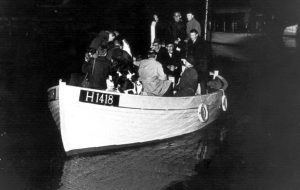 1958 Duckwitz served as West German ambassador to Denmark and later as the ambassador to India. When Willy Brandt became Foreign Minister in 1966, he made Duckwitz Secretary of State in West Germany´s Foreign Office. After Brandt became Chancellor, he asked Duckwitz to negotiate an agreement with the Polish government. Brandt’s work culminated in the 1970 Treaty of Warsaw. Duckwitz worked as Secretary of State until his final retirement in 1970. On March 21, 1971 the Israeli government named him Righteous Among the Nations and included him in the Yad Vashem memorial. He died two years later, on February 16, 1973 at the age of 68.
1958 Duckwitz served as West German ambassador to Denmark and later as the ambassador to India. When Willy Brandt became Foreign Minister in 1966, he made Duckwitz Secretary of State in West Germany´s Foreign Office. After Brandt became Chancellor, he asked Duckwitz to negotiate an agreement with the Polish government. Brandt’s work culminated in the 1970 Treaty of Warsaw. Duckwitz worked as Secretary of State until his final retirement in 1970. On March 21, 1971 the Israeli government named him Righteous Among the Nations and included him in the Yad Vashem memorial. He died two years later, on February 16, 1973 at the age of 68.
 People aren’t usually evil. Nor are the easily accepting of evil. Usually, in order to get people to accept evil, it has to be hidden in a way. It has to be slipped in when they aren’t looking…slowly, so that it is accepted as normal…or a new normal. When Hitler ordered the systematic murder of the mentally ill and handicapped people in 1939, the people of Germany were outraged. Never before had any leader made such a boldly, callous move. Like throwing a frog in a pot of boiling water, they jumped…fought back.
People aren’t usually evil. Nor are the easily accepting of evil. Usually, in order to get people to accept evil, it has to be hidden in a way. It has to be slipped in when they aren’t looking…slowly, so that it is accepted as normal…or a new normal. When Hitler ordered the systematic murder of the mentally ill and handicapped people in 1939, the people of Germany were outraged. Never before had any leader made such a boldly, callous move. Like throwing a frog in a pot of boiling water, they jumped…fought back.
Hitler moved too fast, and the people rebelled. The program, known as Hitler’s Euthanasia Department that began in 1939, came under the heading of unhidden evil. Hitler misjudged his people. He thought they would follow blindly along. When they began complaining about the T.4 program, which began as the systematic killing of children deemed “mentally defective,” Hitler had to act. He had been transporting children from all over Germany to a Special Psychiatric Youth Department and killing them. Later, certain criteria were established for non-Jewish children. They had to be “certified” mentally ill, schizophrenic, or incapable of working for one reason or another. Jewish children already in mental hospitals, whatever the reason or whatever the prognosis, were automatically to be subject to the program. The victims were either injected with lethal substances or were led to “showers” where the children sat as gas flooded the room through water pipes. The program was then expanded to adults. The program was heinous in every way.
Before long the outraged protests began mounting within Germany, especially by doctors and clergy. Some of them even dared to write to Hitler directly and describe the T.4 program as “barbaric.” Others circulated their opinions more discreetly. Heinrich Himmler, was the head of the SS then, and the man who would direct the systematic extermination of European Jewry. Himmler had only one regret…that the SS had not been put in charge of the T.4 program. He says of the protesting, “We know how to deal with it correctly, without causing useless uproar among the people.” Finally, in 1941, Bishop Count Clemens von Galen denounced the euthanasia 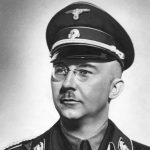 program from his pulpit. Hitler was concerned that other nations would get involved with such publicity about his program. He ordered the program suspended on August 18, 1941…at least in Germany. But 50,000 people had already fallen victim to it.
program from his pulpit. Hitler was concerned that other nations would get involved with such publicity about his program. He ordered the program suspended on August 18, 1941…at least in Germany. But 50,000 people had already fallen victim to it.
Hitler was not to be deterred. He now knew that he had to keep his programs hidden, if he was going to be able to carry out his plans. So, he revived the program in occupied Poland. The people there already had no say in the matter, and he hoped that it would be far enough from Germany so that the German people would not know what was going on. It worked for a time, but in the end, the world would know about the evil he tried so hard to keep hidden, and in the end the number of murder victims was far more than a mere 50,000…it was more like 11 million people.
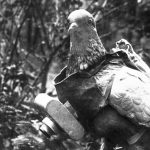 When we think of war, we think mostly of battle, but we should also think of the spies that gather intel. Most often, spies are men and women who have been carefully trained to avoid the enemy, and very possibly to live among the enemy without being detected, so they can hear the plans of the enemy and pass the information to the intelligence community, so it can be used against the enemy so as to win the war. There is, however, another kind of spy that has long been used in war, and was used especially during World War I and World War II…the pigeon. Now this is a spy I would have never have imagined.
When we think of war, we think mostly of battle, but we should also think of the spies that gather intel. Most often, spies are men and women who have been carefully trained to avoid the enemy, and very possibly to live among the enemy without being detected, so they can hear the plans of the enemy and pass the information to the intelligence community, so it can be used against the enemy so as to win the war. There is, however, another kind of spy that has long been used in war, and was used especially during World War I and World War II…the pigeon. Now this is a spy I would have never have imagined.
The reason pigeons caught the attention of the military was that they were trained to fly home…from wherever they were dropped off. I have no idea how they can do that, but they can and do. The spy pigeons went in as Operation Columba, during some of the bloodiest years of World War II. The idea was to drop cages attached to parachutes into the occupied areas of France, with the hope that the people and resistance members, as well as soldiers could attach messages with critical intel on the enemy locations to the pigeons, who would then be sent back to their home base. There, soldiers would be 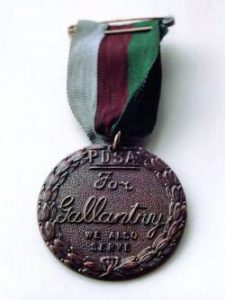 waiting to get the messages to the intelligence community. The plan was perfect, but very risky for the pigeons. So many dangers awaited them…the guns of the enemy, not being found and dying in the cage, and one most of us wouldn’t think of…hungry people. The operation, on its face, was deceptively simple. The British planes dropped 16,000 homing pigeons over occupied Europe during the course of the war, parachuted in small baskets with rice paper, containing a list of questions to be answered by civilians who found them, tucked into canisters tied to their legs. Then the pigeons were to be sent home. Many were lost to the perils in their way, but there were a good number who made it back. A some were decorated with the Dickin Medal for their service…32 pigeons in all were awarded the medal. Pigeon Soldiers like “Winkie” (1943), “Commando” (1944), “Paddy” (1944), “William of Orange” (1944), Mary of Exeter (1945), “G.I. Joe” (1946), Gustav (1944), and Beach Comber (1944), just to name a few. The homing pigeons were donated by their owners…no small sacrifice when you consider that so many lost their lives during the operation. Still, like their human counterparts, the pigeons did their duty, and made their owners proud.
waiting to get the messages to the intelligence community. The plan was perfect, but very risky for the pigeons. So many dangers awaited them…the guns of the enemy, not being found and dying in the cage, and one most of us wouldn’t think of…hungry people. The operation, on its face, was deceptively simple. The British planes dropped 16,000 homing pigeons over occupied Europe during the course of the war, parachuted in small baskets with rice paper, containing a list of questions to be answered by civilians who found them, tucked into canisters tied to their legs. Then the pigeons were to be sent home. Many were lost to the perils in their way, but there were a good number who made it back. A some were decorated with the Dickin Medal for their service…32 pigeons in all were awarded the medal. Pigeon Soldiers like “Winkie” (1943), “Commando” (1944), “Paddy” (1944), “William of Orange” (1944), Mary of Exeter (1945), “G.I. Joe” (1946), Gustav (1944), and Beach Comber (1944), just to name a few. The homing pigeons were donated by their owners…no small sacrifice when you consider that so many lost their lives during the operation. Still, like their human counterparts, the pigeons did their duty, and made their owners proud.
The pigeons did other work, besides just delivering messages. The military equipped some with tiny cameras and they pigeons took reconnaissance photos as they flew back to their home base. The military didn’t have drones in those days, and planes flying “low and slow” would surly be shot down, so the pigeons served as  drones in their day too. Most of us think of homing pigeons as being a hobby, and I suppose it started out as that for most of the handlers, but then they grew to love their pigeons…just like family. Each loss was felt deeply, and each successful return met with great relief. They were proud of their very special soldiers, and we as a nation should be too. It gives me a whole new view of pigeons, which I have always enjoyed watching whenever I am in downtown Casper, where we have a beautiful flock of them that grace the skies above town…dipping and soaring high above the buildings, as if in play, but we should remember that at any time, they could be called upon to serve in a different capacity, if the need arose.
drones in their day too. Most of us think of homing pigeons as being a hobby, and I suppose it started out as that for most of the handlers, but then they grew to love their pigeons…just like family. Each loss was felt deeply, and each successful return met with great relief. They were proud of their very special soldiers, and we as a nation should be too. It gives me a whole new view of pigeons, which I have always enjoyed watching whenever I am in downtown Casper, where we have a beautiful flock of them that grace the skies above town…dipping and soaring high above the buildings, as if in play, but we should remember that at any time, they could be called upon to serve in a different capacity, if the need arose.
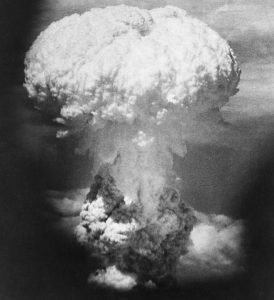 When the first atomic bomb exploded over Hiroshima on August 6, 1945, the city was instantly in ruins. The bomb immediately ended the lives of 80,000 of the 350,000 people of Hiroshima.
When the first atomic bomb exploded over Hiroshima on August 6, 1945, the city was instantly in ruins. The bomb immediately ended the lives of 80,000 of the 350,000 people of Hiroshima.
Tsutomu Yamaguchi was born on March 16, 1916 in Nagasaki, Japan, where he grew up and in the 1930s, joined Mitsubishi Heavy Industries working as a draftsman designing oil tankers. Then in the summer of 1945, he was in Hiroshima for a three-month-long business trip. That trip was at its conclusion on August 6th, and he was preparing to leave the city with two colleagues, Akira Iwanaga and Kuniyoshi Sato. They were on their way to the train station when Yamaguchi realized he had forgotten his hanko (a type of identification stamp common in Japan) and returned to his workplace to get it. That one act would have monumental consequences.
At 8:15am, Yamaguchi was walking towards the docks when the American B-29 bomber Enola Gay dropped the Little Boy atomic bomb near the center of the city, only 1.9 miles away. Yamaguchi recalls seeing the bomber and two small parachutes, before there was “a great flash in the sky, and I was blown over”. The explosion 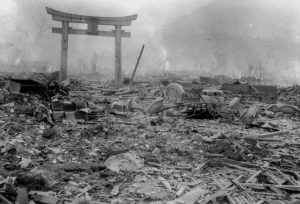 ruptured his eardrums, blinded him temporarily, and left him with serious radiation burns over the left side of the top half of his body. After recovering, he crawled to a shelter and, having rested, he set out to find his colleagues. They had also survived and together they spent the night in an air-raid shelter before returning to Nagasaki the following day. In Nagasaki, he received treatment for his wounds and, despite being heavily bandaged, he reported for work on August 9th. As soon as he could get out, Yamaguchi went back home to Nagasaki.
ruptured his eardrums, blinded him temporarily, and left him with serious radiation burns over the left side of the top half of his body. After recovering, he crawled to a shelter and, having rested, he set out to find his colleagues. They had also survived and together they spent the night in an air-raid shelter before returning to Nagasaki the following day. In Nagasaki, he received treatment for his wounds and, despite being heavily bandaged, he reported for work on August 9th. As soon as he could get out, Yamaguchi went back home to Nagasaki.
Ironically, Yamaguchi arrived in Nagasaki on August 9, 1945. Back at his office, Yamaguchi was describing the blast in Hiroshima to his supervisor at 11:00am, when the American bomber Bockscar dropped the Fat Man atomic bomb over the city. Yamaguchi’s workplace again put him 1.9 miles from ground zero. This time he was unhurt by the explosion, however, he was unable to replace his now ruined bandages and he suffered from a high fever and continuous vomiting for over a week. I’m sure he felt like he was dying. Technically, some 100 people were known to have been 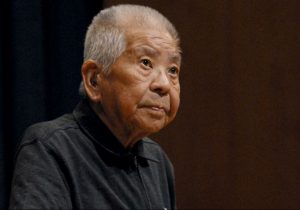 affected by both bombings. In 1957, Yamaguchi was recognized as a hibakusha “explosion-affected person” of the Nagasaki bombing. It is unknown, why the government didn’t recognize the other survivors. In 2006 Yamaguchi addressed the United Nations General Assembly in New York City in support of nuclear disarmament. It was not until March 24, 2009, that the government of Japan officially recognized his presence in Hiroshima three days earlier, as well. He died of stomach cancer on January 4, 2010, at the age of 93. Yamaguchi was the only “officially” documented survivor of both the August 6, 1945 Hiroshima and the August 9, 1945 Nagasaki atomic bombings during World War II.
affected by both bombings. In 1957, Yamaguchi was recognized as a hibakusha “explosion-affected person” of the Nagasaki bombing. It is unknown, why the government didn’t recognize the other survivors. In 2006 Yamaguchi addressed the United Nations General Assembly in New York City in support of nuclear disarmament. It was not until March 24, 2009, that the government of Japan officially recognized his presence in Hiroshima three days earlier, as well. He died of stomach cancer on January 4, 2010, at the age of 93. Yamaguchi was the only “officially” documented survivor of both the August 6, 1945 Hiroshima and the August 9, 1945 Nagasaki atomic bombings during World War II.
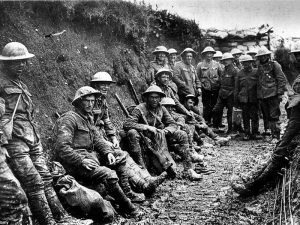 World War I brought a new kind of fighting…trench warfare. It actually started on September 15, 1914, when a battle dragged on far longer that anyone ever expected. The Battle of the Marne was expected to be over quickly, but the soldiers had other ideas. Allied troops halted the steady German push through Belgium and France that had proceeded over the first month of World War I, but neither side was willing to give up. Allied and German forces begin digging the first trenches on the Western Front. They were in this for the long haul. It was the beginning of trench warfare…a tactic that went on until 1918.
World War I brought a new kind of fighting…trench warfare. It actually started on September 15, 1914, when a battle dragged on far longer that anyone ever expected. The Battle of the Marne was expected to be over quickly, but the soldiers had other ideas. Allied troops halted the steady German push through Belgium and France that had proceeded over the first month of World War I, but neither side was willing to give up. Allied and German forces begin digging the first trenches on the Western Front. They were in this for the long haul. It was the beginning of trench warfare…a tactic that went on until 1918.
Trench warfare was a good tactic to use for the most part, because it provided some protection from the enemy forces on the ground. The air war during World War I was much different that the air war of World War II. There were no heavy bombers, and while  there were fighter planes, most of the war was fought on the ground…in the trenches. Soldier had some place to hide from the bullets that were flying by them at lightning speed. The men often used periscopes to safely see over the sides of the trenches. There is no completely safe way to fight hand to hand combat, but the trenches were often the best protection available. Still, while the trenches did provide a measure of protection, they had their dangers too. First, the trenches had to be dug, and the digging might easily be done with the enemy coming up on you fast, or worse yet, already there. The trenches were dug by the men, in ground that was often hard and rocky, but the job had to be done, and then the battle still had to be fought, no matter how weary the soldiers were…no matter how much they needed sleep, in a warm bed.
there were fighter planes, most of the war was fought on the ground…in the trenches. Soldier had some place to hide from the bullets that were flying by them at lightning speed. The men often used periscopes to safely see over the sides of the trenches. There is no completely safe way to fight hand to hand combat, but the trenches were often the best protection available. Still, while the trenches did provide a measure of protection, they had their dangers too. First, the trenches had to be dug, and the digging might easily be done with the enemy coming up on you fast, or worse yet, already there. The trenches were dug by the men, in ground that was often hard and rocky, but the job had to be done, and then the battle still had to be fought, no matter how weary the soldiers were…no matter how much they needed sleep, in a warm bed.
Sometimes, the the worst danger would become a reality, and it often had nothing to do with the enemy. 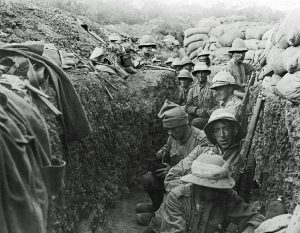 Sometimes, there were cave-ins of the trenches. If the soldiers caught in the cave-in were lucky, their fellow soldiers saw the cave-in, and quickly came to their fellow soldiers’ rescue. Sometimes, they could dig them out in time to save their lives. Unfortunately, all too often, they were too late. Worse yet, was the possibility that the battle was still raging, and while the soldiers knew of the peril their fellow soldiers were in, there was nothing they could do for them at that time, and when they could get too them, it was too late. Sometimes, no one was around to see the cave-in, and the bodies would not be found for months, or years, and sometimes never. Sometimes, these men would forever be listed as missing and presumed dead. And that was the worst fate of all.
Sometimes, there were cave-ins of the trenches. If the soldiers caught in the cave-in were lucky, their fellow soldiers saw the cave-in, and quickly came to their fellow soldiers’ rescue. Sometimes, they could dig them out in time to save their lives. Unfortunately, all too often, they were too late. Worse yet, was the possibility that the battle was still raging, and while the soldiers knew of the peril their fellow soldiers were in, there was nothing they could do for them at that time, and when they could get too them, it was too late. Sometimes, no one was around to see the cave-in, and the bodies would not be found for months, or years, and sometimes never. Sometimes, these men would forever be listed as missing and presumed dead. And that was the worst fate of all.
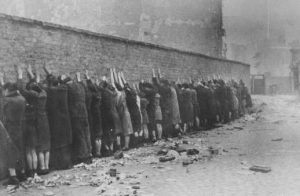 When the Nazis began their annihilation of of the Jewish people, many were caught completely unaware. I think it’s impossible to think that anyone could do such horrible things to other human beings. Many of the Jews actually went along with how things were going…at first. By the time they realized the predicament they were in, it was too late. Other Jews, somehow knew that moving into the “ghetto” was the beginning of their end. Some thought they would never leave their homeland, but would rather wait out the war, which would “be over before they knew it,” but it wasn’t over…not for a long time, and for some ended only in death. Many Jewish families wouldn’t survive the war, at least not intact. Over the years of the war, no Jews could say they didn’t know anyone who had died, because they all knew some who had died, and often it was their own family members.
When the Nazis began their annihilation of of the Jewish people, many were caught completely unaware. I think it’s impossible to think that anyone could do such horrible things to other human beings. Many of the Jews actually went along with how things were going…at first. By the time they realized the predicament they were in, it was too late. Other Jews, somehow knew that moving into the “ghetto” was the beginning of their end. Some thought they would never leave their homeland, but would rather wait out the war, which would “be over before they knew it,” but it wasn’t over…not for a long time, and for some ended only in death. Many Jewish families wouldn’t survive the war, at least not intact. Over the years of the war, no Jews could say they didn’t know anyone who had died, because they all knew some who had died, and often it was their own family members.
One such family, the Shwartz family managed over the years of the war to escape time after time to emerge intact…against all odds. The family had been hit by loss, of course, but not at the hands of the Nazis. At first their lives weren’t affected. They lived in the country, and the “ghettos” seemed so far away. Then it started. It began with the Russians, yes Russians…they had been there at first in an effort to hold back the Germans, but in this case, they weren’t much better than the Germans. At first they took the vegetables and livestock to feed the soldiers, then they took the home. So the family moved.
When the Germans invaded, the family moved to a different town, but before long they were expected to go to the “ghettos.” Instead, they made their escape from Poland to Romania. Before long the family had to be split up to protect themselves. They lived in barns and small sheds, but still they weren’t really safe. They finally had to put their children up for adoption to Christian families, but even that wasn’t safe later on, and the children ended up back with their own parents. Eventually, one of the children at all of ten years old, decided that he was going to Palestine. He went, but they thought he had died when the ship sank. In reality, he was on a different ship, because his ship had been overbooked.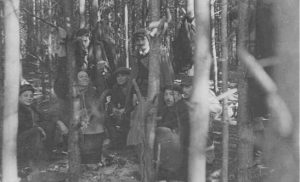
His aunt had also been with the family, and she had been able to move around under the radar, because of her blonde hair and blue eyes. She didn’t look Jewish. During one border crossing, the family was caught by German Gestapo, but the men were young and they were able to fool them into thinking they belonged. Of course, I am oversimplifying their entire ordeal, but miraculously, they entire family live through the Holocaust, without ending up in the camps, and in the end, they moved to Palestine, where they still live today.




